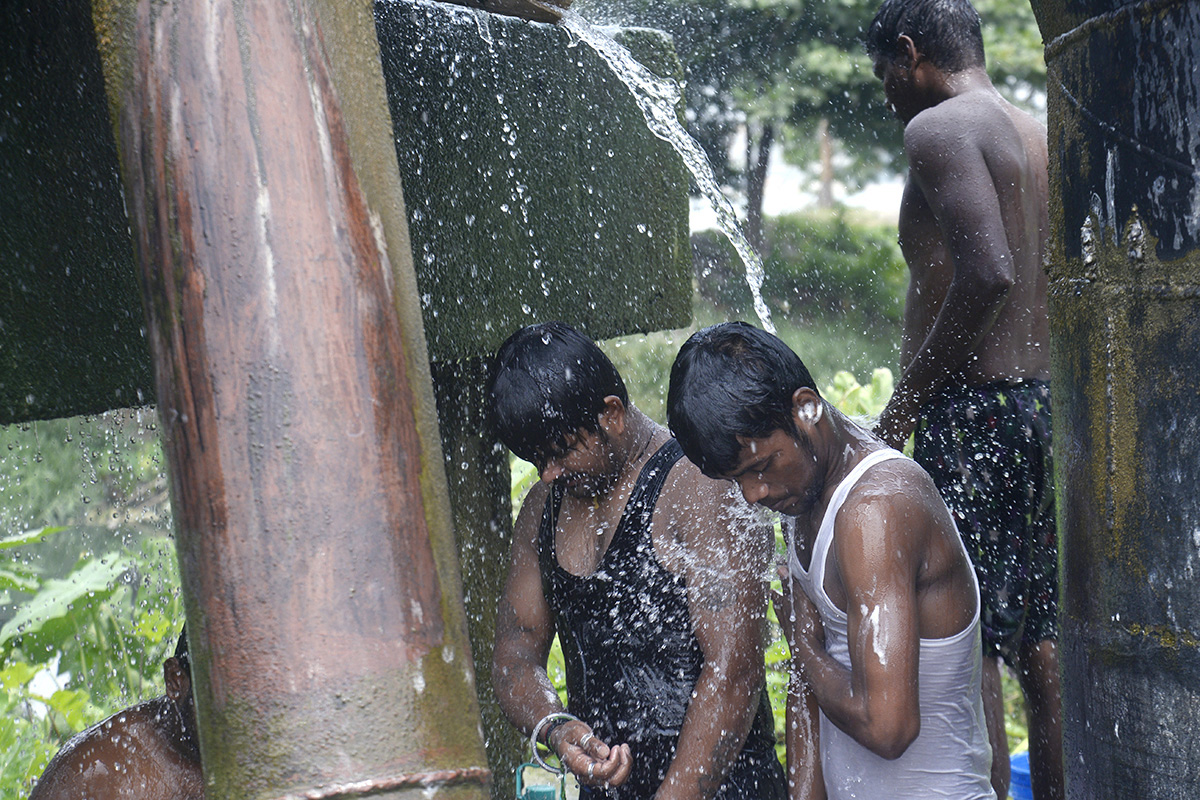For at least 200,000 years, humans have been adapting to the climate. We’ve migrated, tamed fire, and developed clothes, shelter, and agriculture. In the 20th century, adaptation took on a new twist with the development of air conditioning, which made vast swaths of the developed world more habitable to humans. And according to recent research by Barreca et al. (2016), it now appears that air conditioning is a lifesaver. The authors estimate that residential AC saves about 20,000 lives a year in the United States alone, and it has the capacity to save far more around the world.
It has long been known that extreme temperatures, too hot or too cold, can kill. Of course, the specific hazards of extreme temperatures vary widely: Residents of high-latitude nations, such as Russia and Canada, are at disproportionate risk from cold, while people living closer to the equator are most threatened by heat. Moreover, although a warming climate over the past 150 years has prevented far more cold-weather deaths than it has caused extra hot-weather fatalities, further warming could endanger tens of thousands of lives in Central and South America, Africa, and southern Asia.
Barreca et al. begin by documenting a remarkable decline in human deaths caused by temperature extremes in the United States. The mortality threat of days with mean temperatures above 80° F fell by about 75 percent over the 20th century, with virtually the entire decline coming after 1960. Almost 20,000 fewer people now die from heat each year in the United States than if the pre-1960 effects of high temperatures still prevailed. Although cold temperatures also became less lethal over this period, the decline was much smaller. In effect, adaptations to extreme temperatures were almost solely in ways that offered protection from the heat.
The authors evaluate three key 20th-century developments that might have helped Americans beat the heat: the spread of electricity, improved access to health care, and the adoption of residential air conditioning. Electrification enabled a wide range of adaptive innovations, including fans, refrigeration, and air conditioning. Increased access to health care improved preventive and interventional treatments for the effects of temperature extremes. Air conditioning markedly reduced the adverse effects of higher ambient temperatures. As it turns out, residential AC explains essentially the entire 20th-century decline in U.S. heat-related deaths. (Of course, electrification was necessary for AC, but the former took place between 1930 and 1960, while residential air conditioning did not begin to spread until about 1960—and it was only after 1960 that high-temperature mortality rates fell sharply.)
Quite apart from explaining the large drop in U.S. heat-related fatalities during the 20th century, this research has important implications for the future. Many climate scientists forecast that warming will continue through the 21st century. If it does, deaths from excessive heat may rise sharply. In the United States, that potential risk will be essentially eliminated by the presence of residential air conditioning, which the authors estimate will be saving 60,000 American lives each year by the end of the century.
Climate adaptation requires no unwieldy (and uncertain) concerted international action, and it can be fine-tuned to the particular circumstances of time and place.
Of course, in many developing nations there is little installed air conditioning. But Barreca et al. show that there are striking similarities between developing countries today and the United States prior to the adoption of air conditioning. Consider, for example, India and Indonesia, home to more than 20 percent of the world’s population and generally regarded as highly threatened by warming temperatures. Just as almost no one in 1940s America had residential AC, the same is true today for rural India and Indonesia. Moreover, U.S. measures of infant mortality, life expectancy at birth, access to health care, and electrification around 1940 were all quite similar to such measures in India and Indonesia today. These factors suggest that for important parts of the developing world, residential air conditioning may be an effective and feasible life-saving response to the hazards of a hotter future.
Much of the public discussion of climate change has focused on mitigation—coordinated efforts to reduce the emissions of greenhouse gases such as carbon dioxide. The problem with mitigation is twofold. First, the piecemeal mitigation undertaken thus far, such as pollution and fuel consumption standards for cars and trucks, has had little impact on greenhouse gas emissions. Second, effective mitigation strategies (global carbon taxes or cap-and-trade programs) require coordinated international action, and 30 years of talking and treaty-writing have produced no real action. Most recently, despite the spotlight on the 2015 Paris climate accord, that agreement is purely voluntary and nonbinding, providing no incentives for any nation to alter the future path of its emissions.
The great advantage of adaptations such as air conditioning, coastal construction techniques that reflect potential sea-level changes, and climate-tuned agricultural practices is that they can be accomplished at the local level. Hence, climate adaptation requires no unwieldy (and uncertain) concerted international action, and it can be fine-tuned to the particular circumstances of time and place. What is best for coastal Florida is unlikely to be optimal for inland Siberia. With adaptation, residents of each area need not be saddled with policies suited to the other.
For millennia, humans have thrived like no other species precisely because we have adapted to the adversities we have faced. Innovation, such as air conditioning, has played an important role in that success. As we confront the prospect of a warmer future, these are lessons that will serve us well.
Reference
Barreca, A., K. Clay, O. Deschenes, M. Greenstone, and J. S. Shapiro. 2016. “Adapting to Climate Change: The Remarkable Decline in the U.S. Temperature-Mortality Relationship over the 20th Century.” Journal of Political Economy, 124(1): 105-159.




